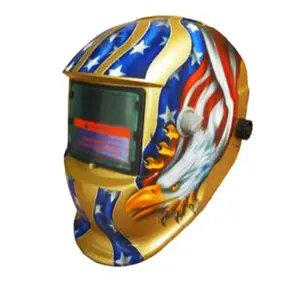Introduction to Welding Helmet with Ventilation
A welding helmet with ventilation is an essential piece of personal protective equipment (PPE) designed for welders and metalworkers. These helmets not only protect the eyes and face from harmful UV and infrared radiation but also help maintain a comfortable working environment by incorporating effective ventilation systems. This is particularly crucial during prolonged welding sessions, where excessive heat and fumes can pose health risks. Choosing the right welding helmet with ventilation can significantly enhance comfort, safety, and overall performance in welding activities.
Types of Welding Helmets with Ventilation
Welding helmets with ventilation come in various types, tailored to meet specific industry needs and preferences. Common types include:
- Passive Ventilated Helmets: These helmets have built-in vents that allow air circulation without active mechanical components, providing a basic level of airflow.
- Active Ventilated Helmets: Equipped with battery-operated fans, these helmets offer superior airflow, making them ideal for heavy-duty welding and extended use.
- Auto-Darkening Welding Helmets: Many ventilated helmets feature auto-darkening lenses, which adjust the tint automatically based on the welding arc, offering both eye protection and ventilation effectiveness.
- High-Impact Resistance Helmets: Some helmets are specifically designed to withstand heavy impact and provide enhanced durability, making them suitable for harsh environments.
Applications of Welding Helmets with Ventilation
Welding helmets with ventilation are vital across multiple industries where welding is integral. Common applications include:
- Manufacturing: In factories, where large-scale welding operations are conducted, ventilated helmets help reduce heat stress.
- Construction: Welders on construction sites benefit from these helmets to ward off fumes in closed or poorly ventilated areas.
- Aerospace: Precision welding in the aerospace industry requires ventilated helmets due to the challenging environmental conditions.
- Automotive Repair: Constantly repairing and welding in the automotive sector necessitates breathable equipment for comfort and safety.
Features and Advantages of Welding Helmets with Ventilation
Investing in a welding helmet with ventilation brings numerous features and advantages that enhance the welding experience:
- Effective Airflow: The primary feature is the ventilation system, providing a continuous flow of fresh air, reducing dizziness and fatigue.
- Comfortable Fit: These helmets are designed ergonomically to provide comfort, accommodating prolonged usage without discomfort.
- Enhanced Visibility: Many ventilated helmets come with high-quality lenses that ensure excellent visibility while shielding against bright arcs.
- Reduced Inhalation Risks: With improved airflow, the risk of inhaling harmful fumes and gases is significantly minimized.
- Long-Term Cost Efficiency: Durable and high-quality materials used in the helmets ensure a prolonged lifespan, translating to better value over time.




















































